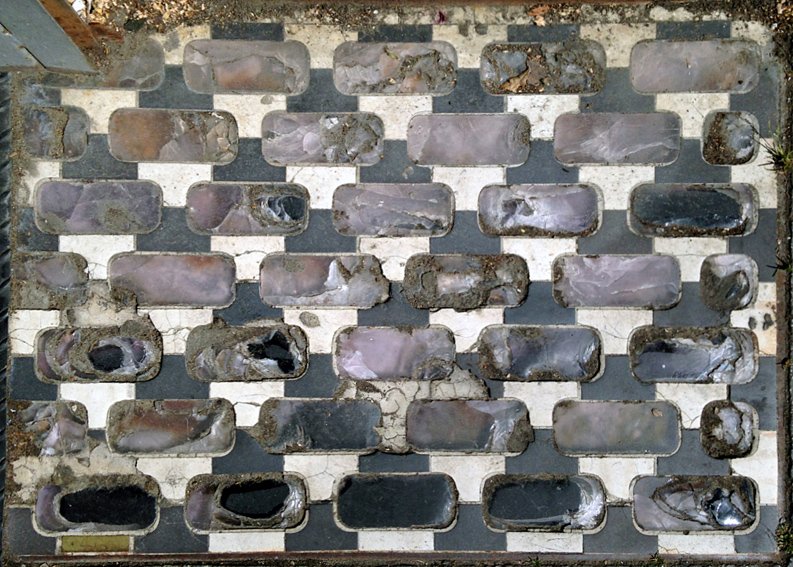Glass prism pavement lights
Pavement lights can be seen underfoot in highly populated cities like London, Dublin and New York City. Most of us walk over them without noticing; I’ve always had a fondness for their worn patterns and patina.
The sets of glass grids of usually small squares or rectangles (but also circles or even hexagons) in a cast-iron frame that appear on many pavements, usually outside shops and offices, used to serve a practical purpose – to allow sunlight into the basements below them. Historically, lighting was expensive and pavement lights or light wells, also known as vault lights in the States, were a cheap way to allow natural light into rooms built underneath pavements.
In South London (and further afield), many pavement lights were made by the Hayward Brothers of Borough, a successful ironwork business producing spiral staircases, manhole covers, coal plates, stoves and the like. They were a prosperous if unexceptional company but Edward Hayward’s Patent No. 2,014 of 1871, called Improvements in Pavement Lighting, was the real breakthrough. This was the invention of the semi-prismatic pavement light.
These pavement lights worked by using lighting prisms which throw light sideways (instead of downwards in narrow beams), creating a brighter, even-distributed effect to the basement. Whether the basement was a home, office or factory, the prism literally opened up the room in a cost-effective way. The idea came from deck prisms, used to let light into the dark decks of ships.
Cover for the Hayward Brothers ‘Semi-Prism’ lights catalogue.
Their popularity declined in the 20th century with the advent of cheap electricity. Though pavement lights still survive and the name Hayward Brothers still appears on many frames, some are in a state of disrepair with broken glass being replaced by concrete or wood (meaning there are a lot of gloomy-looking basements!). Newer designs are rather more generic and plain than older ones. They all look great at night when the basement below is lit and stepping over them is like being in the Billie Jean video.
Yes, I also like manhole covers.
Previously on Barnflakes
London’s old shopfront mosaics and tiles
London typos








